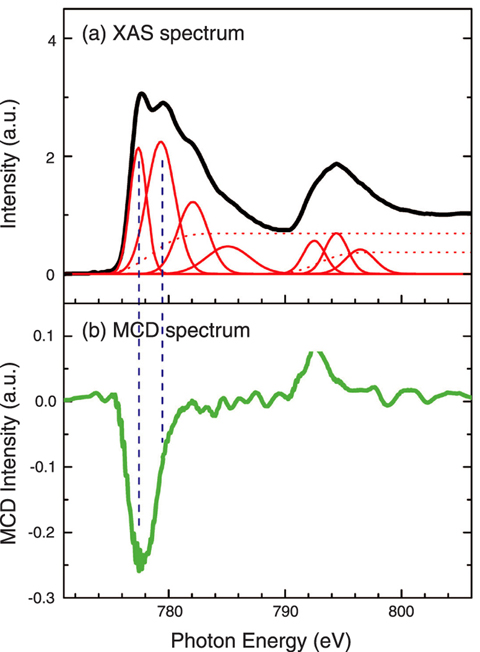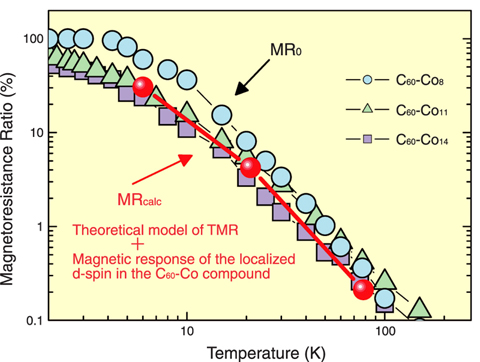
Fig.6-2 X-ray absorption and magnetic circular dichroism spectra of the C60-Co compound

Fig.6-3 Temperature-dependence of the magnetoresistance ratios
A technology in which both electronic charges and spins are employed as information carriers has emerged recently. This technology is called "spintronics", and has been investigated actively in order to realize spintronics devices with a variety of new features. One of the important principles in the spintronics devices is the influence of magnetic field on electronic resistivity in these devices, i.e. magnetoresistance. Such phenomenon is caused by the different conductance of the electron carriers depending on the direction of the spin (up / down). Recently, we have found the C60-Co films exhibit a much larger tunnel magnetoresistance (TMR) effect than previously used inorganic materials. In the present study, we investigated the electronic and spin states of the C60-Co films by X-ray absorption (XAS) and magnetic circular dichroism (MCD) spectroscopy, and found that the magnetic response of the localized spins in the C60-Co compound is an important factor in its giant TMR effect.
Fig.6-2(a) is a typical XAS spectrum of the C60-Co compound in the C60-Co films. Several multiplet structures (red curves) can be distinguished in the absorption spectrum. These structures are attributed to the different electronic states of the Co atoms due to their bonding in the C60-Co compound. Moreover, a clear MCD signal (green curve) which indicates the presence of the spin-polarization can be distinguished clearly in the C60-Co compound (Fig.6-2(b)). The observed MCD signal can be assigned to two major peak positions in the XAS spectrum of Fig.6-2(a). This indicates the presence of the spin-polarized states of electrons localized in the C60-Co compound.
Fig.6-3 shows the temperature-dependence of the magnetoresistance ratio (MR0) measured in the C60-Co films, together with magnetoresistance ratio calculated with the theoretical model of the TMR effect (MRcalc). In the present study, we assumed that the localized spins in the C60-Co compound affect the spin states of the electrons tunneling in the C60-Co films so that their spin-polarizations (P) are enhanced to nearly P = 100%, in other words, completely spin-polarized states. It was found that in this case, the temperature-dependence of MRcalc agrees well with that of MR0. This suggests the direct influence of the localized spins in the C60-Co compound on the observed giant TMR effect.